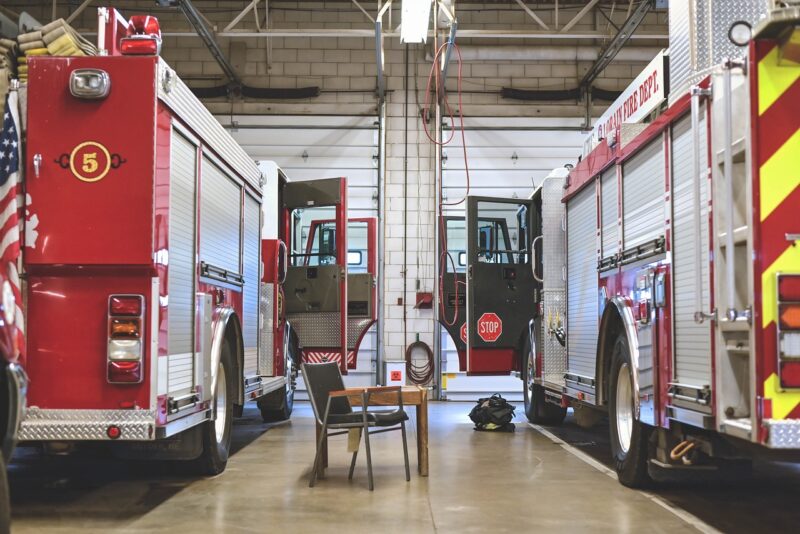Why Fire Stations Are Built Where They Are: Strategic Placement for Faster Response
November 14, 2024

Fire stations play a critical role in community safety and emergency response. Their strategic placement is not just a matter of convenience; it’s a carefully considered decision that takes into account numerous factors to ensure public safety and efficient emergency response times. In this article, we’ll explore why fire stations are built where they are and how these locations contribute to improved services for communities.
Understanding Fire Station Placement
The location of a fire station is determined by a combination of population density, risk assessment, and geography. Urban areas may require multiple fire stations to minimize response times, while rural areas might be spread over larger distances but have fewer people to serve.
Here are some key factors that influence fire station placement:
- Population Density: Higher population areas require more fire stations to ensure quick response times. This is especially critical in cities where traffic congestion can delay emergency responders.
- Geographic Features: Natural barriers such as rivers, mountains, or unpaved areas can affect travel routes. Planners must consider these features to avoid delays in emergency response.
- Historical Incident Data: Analyzing data on previous incidents helps fire departments understand where most emergencies occur, allowing them to strategically place stations closer to high-risk areas.
- Community Development Plans: As cities grow, new areas may emerge that require fire protection. Fire stations are often relocated or new stations built to keep pace with urban expansion.
- Availability of Resources: Proximity to major highways and medical facilities can also dictate the strategic placement of fire stations to ensure quick access to needed resources during emergencies.
The Importance of Response Times
In emergency services, every second counts. Studies show that a fire doubles in size approximately every 30 seconds; therefore, rapid response times can be the difference between a minor incident and a disastrous fire.
The National Fire Protection Association (NFPA) recommends that fire incidents should be reached within an average of 4 to 6 minutes. Thus, fire stations are strategically located to ensure coverage that will enable firefighters to arrive at the scene as quickly as possible.
The urgency of different types of fires can inform the need for quicker placements. Here are a few scenarios where time is of the essence:
- Structure Fires: The faster responders arrive, the better chance there is to save lives and protect property.
- Brush Fires: Wildfires can spread rapidly; hence, stations near these areas can mitigate damage more effectively.
- Medical Emergencies: Fire stations often provide first responders and paramedics, necessitating prompt arrival times even in non-fire emergencies.
Urban vs. Rural Fire Station Placement
The placement of fire stations differs significantly in urban and rural settings due to population density and resource allocation. Here are some contrasts between urban and rural fire station strategies:
Urban Areas:
Urban environments typically have higher population densities, leading to the necessity for multiple stations. Factors influencing placement in cities include:
- Proximity to High-Rise Buildings: Locations near residential and commercial high-rises allow for swift responses to incidents.
- Traffic Patterns: Understanding the traffic flow helps firefighters navigate to emergencies more efficiently.
- Access to Technology: City fire stations are usually equipped with advanced communication systems, enhancing overall service efficiency.
Rural Areas:
In rural areas, the approach to fire station placement can be quite different due to lower population density. Considerations include:
- Wider Coverage Area: Fewer fire stations must cover larger geographic areas, necessitating strategic locations based on incident patterns and travel time.
- Collaboration with Volunteer Firefighters: Many rural fire stations rely on volunteer responders who may need to travel from home, making accessibility much more critical.
- Utilization of Mobile Units: Rural stations may use mobile fire units and firefighting equipment distributed across farms or communities due to larger distances between homes.
The Future of Fire Station Planning
As communities evolve and technology progresses, the planning and placement of fire stations continue to adapt. Factors contributing to future fire station strategies include:
- Smart City Initiatives: Increased use of data analytics will allow fire departments to optimize station locations using real-time data on emergency calls and traffic conditions.
- Sustainability Considerations: Future fire stations may incorporate eco-friendly practices, influencing placement near public transportation or utilizing renewable energy sources.
- Community Engagement: Future placement strategies will continue to consider community input, especially in areas prone to high-risk events.
Fire departments are committed to continually improving their services, ensuring that fire stations are optimally located for effective emergency response in a rapidly changing world.
Conclusion
The location of fire stations is a sophisticated equation built upon various factors including geography, community needs, historical data, and anticipated future trends. By strategically placing fire stations, fire departments ensure that they can respond quickly to emergencies, ultimately safeguarding lives and property. As communities continue to grow and change, the importance of assessing fire station placement will remain vital to maintaining effective and efficient emergency services for years to come.







